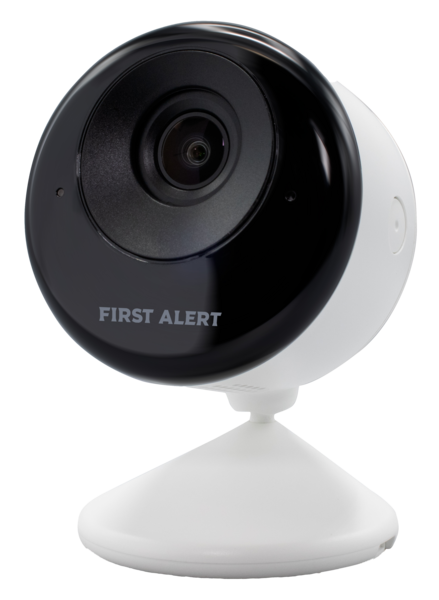The First Alert VISTAHLKP Is Now Available!
Posted By Julia RossFor those end-users who desire a more traditional keypad for their First Alert VISTAH3, the First Alert VISTAHLKP wired landscape keypad is now available. Unlike older hybrid systems like the VISTA-20P, though, this keypad will only allow you to control the security system, not program it.

Aside from its traditional appearance, the First Alert VISTAHLKP has another distinct advantage over its wireless touchscreen counterparts. It is a wired keypad, and it connects to the panel using the iBus. The VISTAH3 introduces a new bus technology called iBus that replaces the older Enhanced Console Protocol (ECP) used by the VISTA-20P and other VISTA panels.
This new bus protocol uses RS-485, a frequently used hardware and driver architecture common in industrial automation. This allows for more flexibility in wiring, and longer wire runs for wired bus devices. It is Alarm Grid's belief that every VISTAH3 panel should have at least one (1) wired keypad, for occasions when wireless keypads may not be functioning properly.

- 2X16 LCD Display
- Power LED
- Status LED
- Disarm (Off) Key
- Arm Maximum (Away, No Entry Delay)
- Arm Instant (Stay, No Entry Delay)
- Medical Panic
- Panic
- Fire Panic
- Police Panic
- Status (scroll)
- No Other Function
- System Tests
- # Key
- Quick Arm Night Option
- Chime (Toggle)
- Quick Arm Home Option
- Bypass Sensors
- Quick Arm Away Option
- Arm Stay
- Arm Away
- Trouble LED
Using the VISTAHLKP with the VISTAH3 is very similar to using a Honeywell 6160 keypad on a VISTA-20P or similar panel. The following commands can be used:
- Arm (Away/Stay/Instant/Max/Night)
- When the system is not ready, quick arming, if enabled, will automatically bypass faulted zones at the end of exit delay.
- Disarm
- GOTO (allows the user to log onto a separate partition, if their user code has access)
- Returns to home partition after 30 seconds of no activity
- Add/Edit/Delete User Codes
- Bypass Zones
Excerpt from the User Guide showing Quick Arming icons and corresponding keypad commands:
Each First Alert VISTAHLKP can display either English or French language, depending on the language selection in the VISTAH3 panel. The keypad connects to the panel's iBus terminals as shown:


Wiring Limits for iBus Based on Current Draw and Wire Gauge:
| Wire Gauge (AWG) |
Total Current of All Devices Connected to a Single Wire Run | ||||
|---|---|---|---|---|---|
| 50mA or Less | 100ma | 300ma | 500ma | 600ma | |
| #22 AWG | 700' (213m) | 350' (107m) | 120' (37m) | 70' (21m) | 60' (19m) |
| #20 AWG | 1200' (366m) | 600' (183m) | 200' (61m) | 120' (37m) | 100' (30m) |
| #18 AWG | 1900' (579m) | 950' (290m) | 320' (98m) | 190' (58m) | 160' (49m) |
| #16 AWG | 3000' (914m) | 1500' (457m) | 500' (152m) | 300' (91m) | 260' (76m) |
| If a separate power supply is used to power iBus devices, it should have a common negative with the iBus. The iBus terminals are not large, so it may be difficult to use heavier gauge wire with them. | |||||
NOTE: With ECP devices, the four wires for the bus are:
- Negative (-), or Black
- Positive (+), or Red
- Data In, or Green
- Data Out, or White/Yellow
However, the iBus connections are:
- Negative (-), or Black
- Positive (+), or Red
- Data A, or Green
- Data B, or Yellow/White
On the iBus, Data In is YELLOW, and Data Out is GREEN.
The VISTAHLKP keypad cannot be used to program the VISTAH3 system or to control smart home devices. For these capabilities, you'll need a wireless touchscreen keypad and either a PROWIFI (WIFI-Only) or PROWIFIZW (WIFI and Z-Wave Plus) module installed in the panel.
The compatible touchscreen keypads for the VISTH3 are the Honeywell Home PROWLTOUCH, Resideo PROWLTOUCHC, or First Alert VISTAHTCHWLC. Resideo has been working to dial-in their branding strategy recently, hence the different "brands" for these keypads. But, Honeywell Home, Resideo, and First Alert are all Resideo brands and all have the same robust, quality hardware.
If you choose to use the PROWLTOUCH or PROWLTOUCHC, a firmware update to the keypad is currently required (as of February, 2025) to make the keypad compatible with the VISTAH3. This firmware update can take about 30 minutes to download and install. The panel will be updated first, then the keypad. The panel won't download firmware using cellular data, so be sure the WIFI module is installed.
The primary difference between the PROWLTOUCH-style keypad and the VISTAHTCHWLC is size. The dimensions on the VISTAHTCHWLC are 5.75"L x 7.875"W x 1.0"D while the PROWLTOUCH keypads are 4.76"L x 7.68"W x 0.708"D.
You'll often find keypads near entry doors, bedrooms, kitchens, and common areas – basically, anywhere you need quick access to your security system. The VISTAHLKP is a smart choice for entry and exit doors, letting you arm and disarm the system in seconds. Another bonus? If an intruder triggers the alarm, the keypad's noise can be a good distraction. While they're dealing with that, the VISTAH3 system will be working behind the scenes to notify you and the monitoring service, depending on your monitoring plan.
For a straightforward, dependable security solution, the VISTAHLKP keypad is an excellent choice. Its wired connection to the panel ensures near 100% reliability, eliminating the potential issues associated with wireless keypads. If you're looking for simplicity and peace of mind, the VISTAHLKP delivers. Get yours today!
















